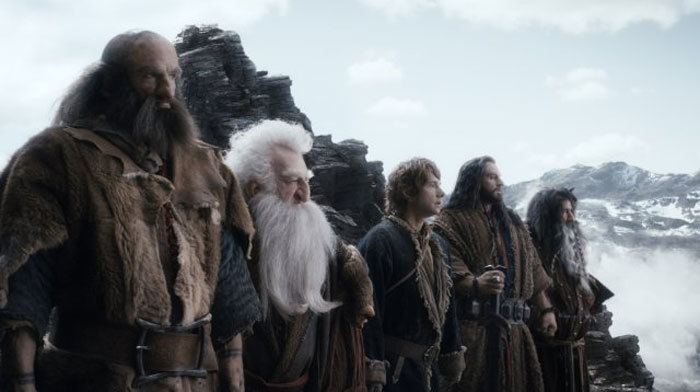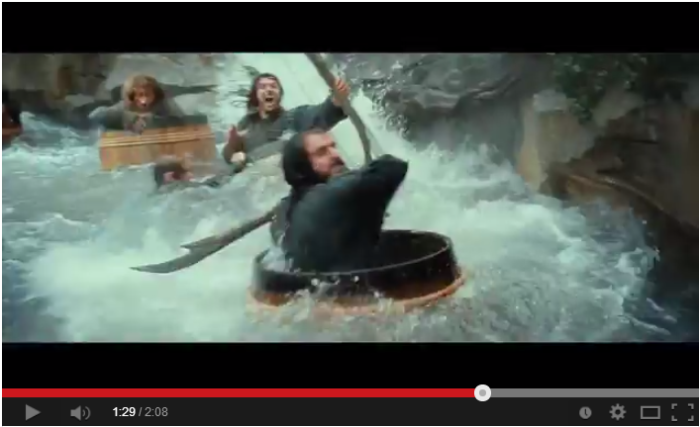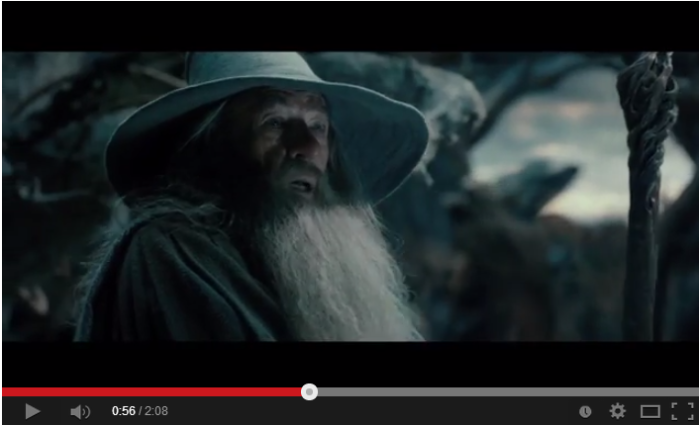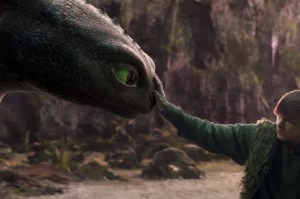5 Biblical Themes in 'The Hobbit: The Desolation of Smaug'

Hollywood may occasionally downplay Christian themes in a movie like "Prince Caspian," "42," or "Mandela: Long Walk to Freedom," but "The Hobbit: The Desolation of Smaug" not only keeps J.R.R. Tolkien's biblical themes – it even expands upon them.
In addition to excellent cinematography, a vibrant film score, and a stunning dragon, the new Hobbit film features five biblical themes from the Old and New Testaments. Avoiding the obvious allusions to Christianity featured in "Man of Steel," "Desolation of Smaug" nevertheless portrays a biblical worldview, filled with prophecy, demons, and warnings about the corrosive power of greed.
Many fans and moviegoers may be disappointed, however, at a central aspect of the film. The storyline, while adventurous and compelling, fails to reach the sort of resolution found in the second "Lord of the Rings" film, "The Two Towers." In that movie, the final action sequences bring closure to a number of overriding plot points – the battle for Helm's Deep, Frodo and Sam leaving Osgiliath, and the Ents taking Isenguard. Expect much less closure in "Desolation of Smaug."
As Cinekatz' Vivek Subramanyam pointed out, what "Desolation of Smaug" lacks in character development (largely left for the first Hobbit) and a standalone conclusion, it makes up for in fast-paced, eye-popping action. In addition to the dragon and humungous trove of gold – truly stunning – it features a crazy battle as Bilbo (Martin Freeman) and the dwarves travel down a river in barrels, where elves Legolas (Orlando Bloom) and his would-be girlfriend Tauriel (Evangeline Lily) help them battle orcs.

Without further ado, here are the five biblical themes
1. The Corruption of Greed
"The Hobbit: The Desolation of Smaug" embellishes a theme in J.R.R. Tolkien's novel which also undergirds many portions of Christ's teaching – how greed and the love of money can corrupt the human – or, in this case, dwarf – soul. Thorin Oakenshield (Richard Armitage), arguably the film's protagonist, passionately pursues wealth and uses it to gain power among the lake folk.
Thorin's grandfather Thrane, the last "King Under the Mountain," drew the dragon by hoarding up gold. One could even say that in the Hobbit films, "the love of money is the root of all kinds of evil.
2. Prophecy
Prophecy plays a major role in "Desolation of Smaug." In order to find their way into the Lonely Mountain – the ancient kingdom of Thrane – the company must stand at the door on the last day of the Fall, to see the light shine on the keyhole. Their only entrance comes once a year, and the prophetic authors of the dwarven map add a key detail – "when the thrush knocks."
Another prophecy, more dark and dire, of when dwarves return, haunts the men of Lake Town. It warns of fire to descend upon men before the battle's end. As in scripture, which abounds with prophecies of great kingdoms toppling and a Messiah born of a virgin, prophecy haunts "Desolation of Smaug."
3. Demons

Here, too, the film builds upon a theme of Tolkien's. While the battle with the Necromancer, the spirit of Sauron awakening the dead (more on that later), does not play a part in The Hobbit, all three films deal with this subplot head-on. In "Desolation of Smaug," dark magic hides a group of orcs. When the wizard Gandalf (Ian McKellen) asks "where is your master?" the orc leader declares "He is everywhere, we are legion."
Besides the clear reference to Luke 8:30, "Desolation of Smaug" features the dark Necromancer, who fights Gandalf with black magic, conceals himself at will, and raises evil spirits from the dead. While he does not necessarily possess victims, his spirit haunts the ancient fortress of Dol Guldur, and works to produce a huge orc army.
4. Evil Raising the Dead
As mentioned above, the Necromancer awakens the dead. In "Desolation of Smaug," Lord of the Rings fans get a taste of the backstory of Sauron's fiercest warriors, the Ringwraiths, or Nazgul. Gandalf and his fellow wizard Radagast travel to a tower with ancient tombs, they find 9 tombs empty, clearly torn open from the inside.
Evil raising the dead connects with Saul's decision to call a medium and awaken the spirit of the prophet Samuel in 1 Samuel 28. Another proper name for this witch is "necromancer."
5. The Strength of Little People

A common theme throughout Tolkien's work, but definitely deserving mention, is the importance of the little people. Bilbo may be a hobbit, but in this film, he almost singlehandedly saves his dwarf comrades from spiders and prison, when there seems no hope can be found. When the hobbit goes off to face the dragon, the old dwarf Balin (Ken Stott) remarks, "It never ceases to amaze me, the courage of hobbits."
Jesus' suffering the little children to come to him, and his declaration that unless you believe like a little child, you will not enter the Kingdom of Heaven, ring in the success and kindheartedness of Bilbo Baggins. The hobbit proves his loyalty time and again, along with his resourcefulness. As Jesus turned to the downtrodden of society and said the repentance of sinners will save them, so the acts of a little hobbit carry tremendous consequences for an entire world.




























